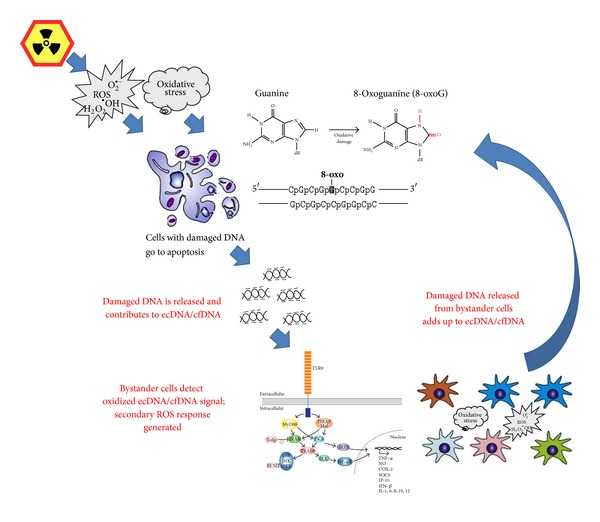Figure 1.

The proposed mechanisms for the propagation of the stress signal from irradiated cells to bystander cells. In this scheme, the 8-oxo-dG serves as a model example of DNA lesion that turns DNA fragments into the stress signal; it should be noted that other types of DNA lesions may be recognized as well. The central player that ensures amplification of the signal in this cascade is the oxidative stress. The secondary oxidative stress evoked in intact bystander cells occurs after an interaction of the oxidized ecDNA with the receptors, or oxidized DNA sensors, that must be present on the surface or inside the bystander cells. One possible candidate for oxidized DNA sensor is toll-like receptor TLR9.
